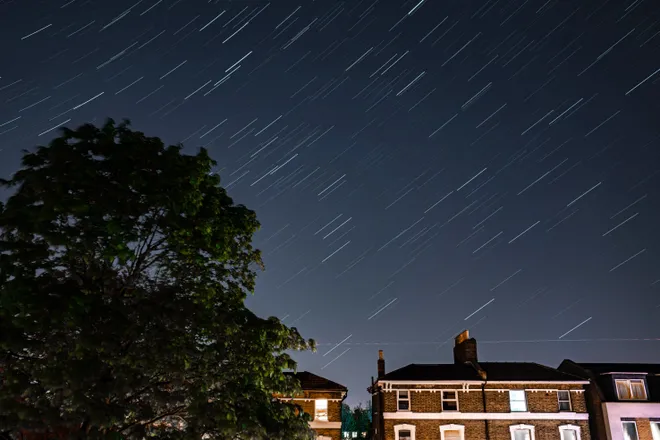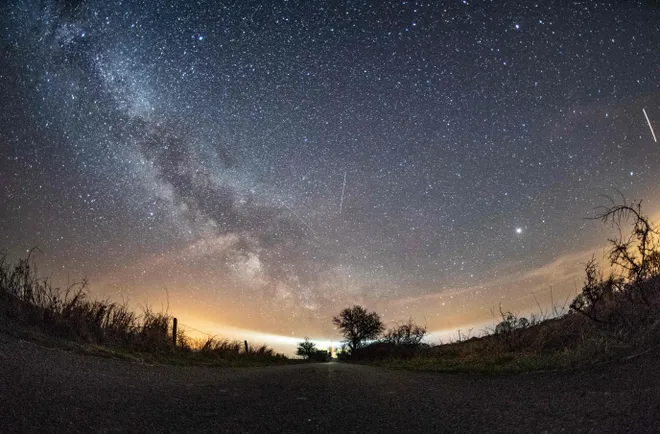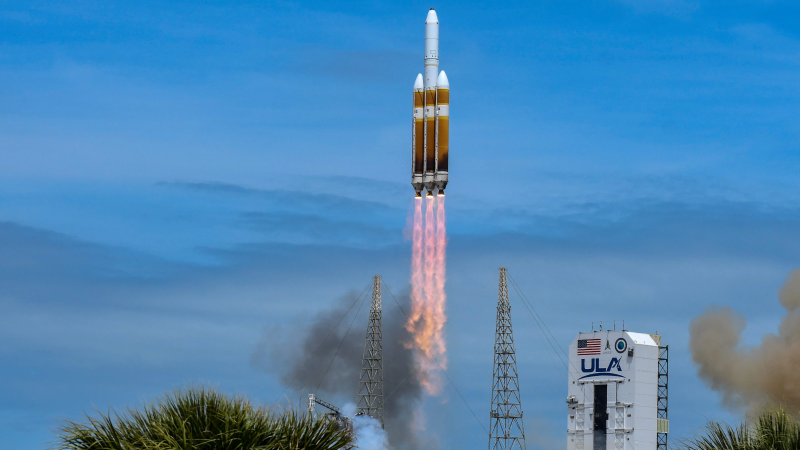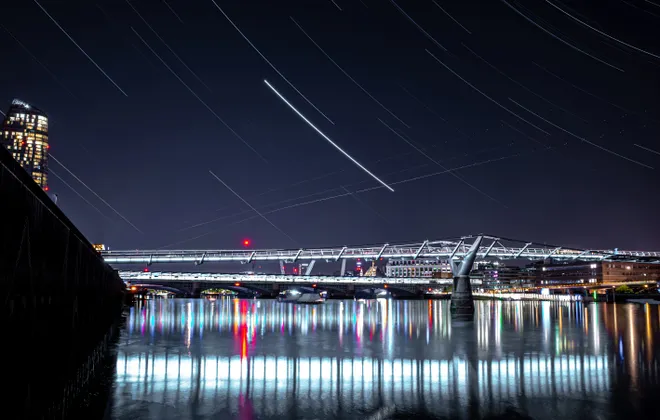The Lyrids begin this week. How to see first major meteor shower of spring when it peaks
A week after that stunning total solar eclipse, the Lyrid meteor shower is about to give sky-gazers plenty of reasons to once again look toward the cosmos.
One of the oldest-known meteor showers on record, the Lyrids has peaked like clockwork every late April for thousands of years. And while that peak won't be occurring until Saturday, you still have a chance to see the soaring meteors beginning Monday.
The best part? While the April 8 eclipse was only viewable in North America, the Lyrids should be visible pretty much around the world.
Here's what to know about the Lyrid meteor shower.
Out of this world:From Stanley cups to Samsung phones, this duo's company launches almost anything into space
Where do the Lyrid meteors come from?

Meteor showers occur when Earth passes through debris trails left by comets and other space objects. The debris – space rocks known as meteoroids – collides with Earth's atmosphere at high speed and disintegrates, creating fiery and colorful streaks in the sky, according to NASA.
Those resulting fireballs, better known as "shooting stars," are meteors. Those meteoroids that survive their trip to Earth without burning up in the atmosphere are called meteorites, NASA says.
Named for the nearby constellation Lyra, the Lyrid meteor shower is composed of pieces of debris from the Comet C/1861 G1 Thatcher. The comet is named for A. E. Thatcher, who discovered it in 1861.
The meteor shower itself, though, has been observed for 2,700 years ever since the first recorded sighting was made in 687 BC by the Chinese, according to NASA.
How can we see the Lyrid meteor shower?
The Lyrids are known as one of four major meteor showers each year that have a sharp peak. This year, that peak falls between April 21-22, according to EarthSky.org.
However, the meteor shower could be visible anytime beginning Monday.

According to NASA, the best view in the Northern Hemisphere of the shower is after moonset and before dawn.
Here are tips from the U.S. space agency:
- Pick an area well away from city lights or street lights.
- Bring a sleeping bag, blanket, or lawn chair.
- Lie flat on your back with your feet facing east and look up.
- Be patient. About 30 minutes in the dark your eyes should adapt and you should begin to see meteors.

How many Lyrids will we see per hour?
The first meteor shower of the spring, the fast and bright meteors of the Lyrids will appear to be flying across the night sky.

While NASA notes that the Lyrids can surprise watchers with as many as 100 meteors seen per hour, in general, 10-20 Lyrid meteors can be seen per hour during the peak.
Lyrids don’t tend to leave long, glowing dust trains behind them as they streak through the Earth's atmosphere. However, they can produce the occasional bright flash called a fireball.
Disclaimer: The copyright of this article belongs to the original author. Reposting this article is solely for the purpose of information dissemination and does not constitute any investment advice. If there is any infringement, please contact us immediately. We will make corrections or deletions as necessary. Thank you.


